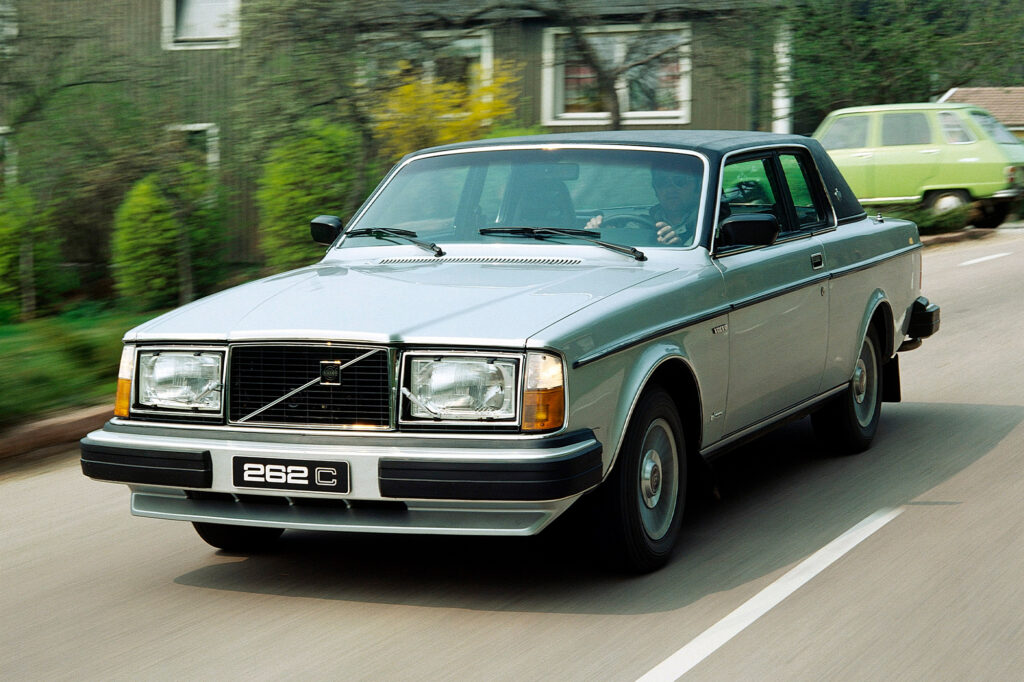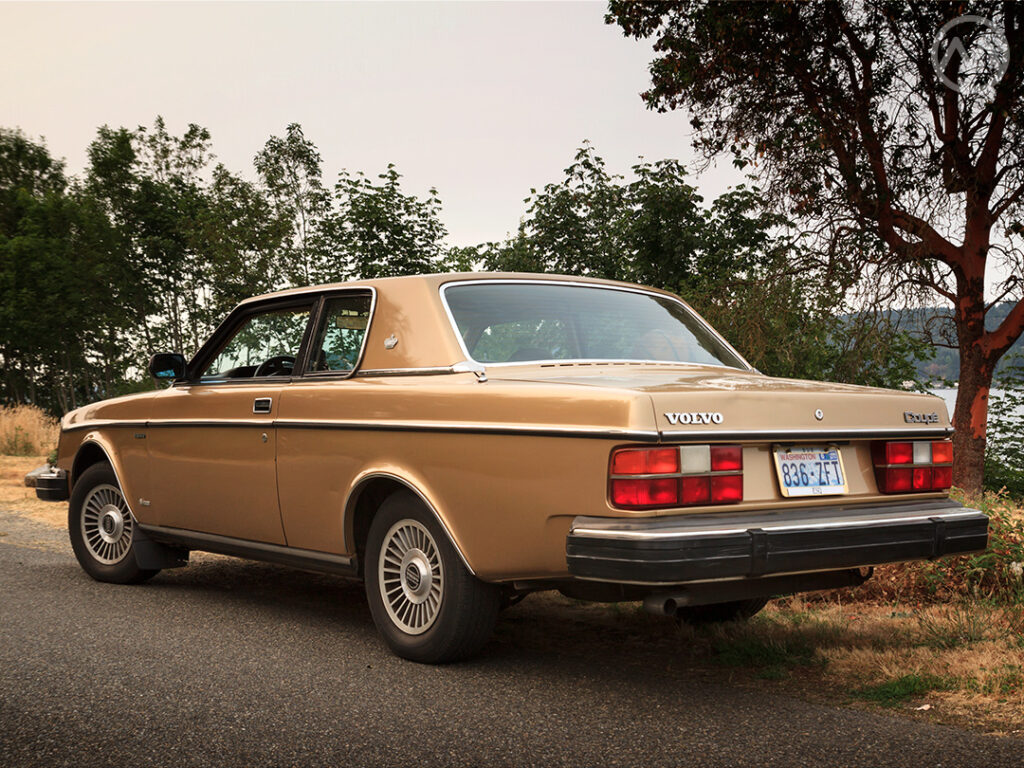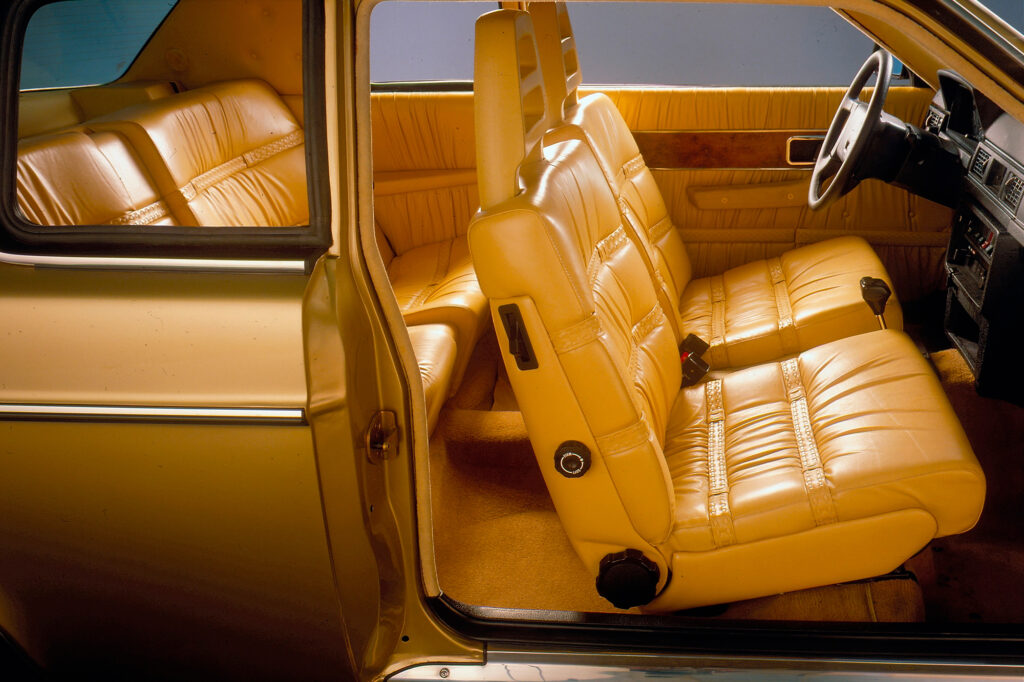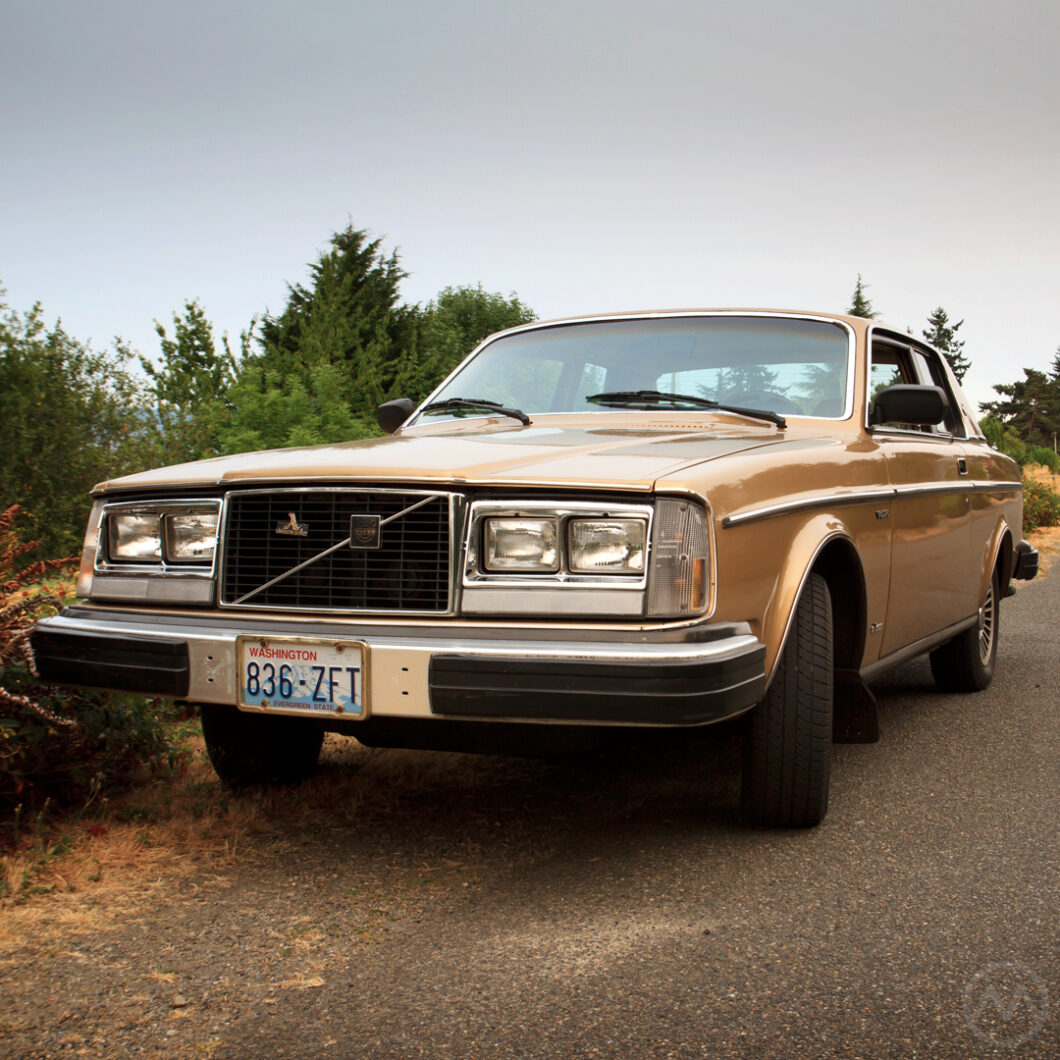Technically speaking, this gold car is a 1981 “Volvo Coupe,” but it only had that rather anonymous badging for its final outing in 1981. It’s better known as the Volvo 262C and undoubtedly one of the most unusual luxury coupes of the 1970s. There are conflicting stories about how it came to be, but the 262C blended all of the mechanical pieces of the company’s ultra-conservative 260-series flagship with the long low roof and fat C-pillars of a contemporary American luxury coupe, and possibly one specific Yank Tank.
In the era when the “personal luxury car” was king and luxury status was everything, the 262C’s pedigree was only enhanced by its Bertone badging. In a sense, this was real automotive couture in an era when many automakers were content to tack-on luxury trappings like Opera windows and Parthenon grilles, even if the house of Nuccio only built the car. (Bertone was sometimes keen to let people know they did not design it.)
Instead, some of the design work came from Sergio Coggiola, who built many Volvo concepts, and Volvo’s long-serving design director Jan Wilsgaard. The car was almost completely out of character for Volvo and a very left-field entry among personal luxury cars, but it also cost $15,000 when it debuted in 1978. That was three times the price of a Monte Carlo and more than a Cadillac Eldorado, but much less than a Jaguar XJS or Mercedes’ 280CE or 450SLC. It competed with a very wide field.
Origins of the Volvo 262C
This unusual car has two closely related origin stories. In the first, on a visit to the U.S., Volvo CEO Pehr Gyllenhammar was so impressed by the magic a good halo coupe could imbue on a manufacturer, specifically Lincoln, that upon his return, he tasked the design staff with producing a new coupe to replace the departed 1800E. While the 1800ES wagon was still in production, the end of the 1800E coupe left a gap in the lineup.
One solution was the “Tre Kronor” or “Three Crowns” project. For this, Volvo built a pair of three-door fastbacks based on the upcoming 240 and 260 series. These vehicles, called the 243 (four-cylinder) and 263 (V6) resembled Morris Marina Coupes on steroids, and while they might have made a good addition to the new lineups, and look newer than the 2-door sedan versions of either, Volvo ultimately judged them not worthy of building. When the 240- and 260-series cars went into production, they retained the bodies of the old 140-series cars.
Less likely, but clearly related, is the tale told by Bob Austin, former head of PR for Volvo’s American operation. Both relate to a single vehicle, the Lincoln Continental MkIV. The modern Mark series, starting with 1969’s Continental MkIII, revolutionized Lincoln and soon accounted for half or more of the brand’s volume. It was the first Lincoln model to ever seriously challenge (and ultimately best) a rival Cadillac in the sales race. It was magic, even if some of Ford’s executives weren’t such big fans of the circa-1972 MkIV, developed under short-lived Ford President Semon “Bunkie” Knudsen.
Henry Ford II himself had a MkIV, and when Ford executives, including “the Deuce,” went to Sweden to visit Volvo’s Kalmar factory, they supposedly brought over a couple of MkIVs. Then as now, American cars are very popular in Sweden, and the MkIV made quite an impression. The Ford higher-ups were there to learn about the team structure at Kalmar and how to improve production methods, but the Swedes couldn’t help notice the cars they brought.
The MkIV, Austin once related, supposedly impressed Gyllenhammar enough for him to have Volvo build one of its own. Whether you believe he saw the Lincolns in Dearborn or in Kalmar, the influence was clear. Rather than go with the 243/263 idea, another prototype was built, this time by Coggiola.
Here, a chop-top two-door sedan was built with the ornate front end and straight-six engine of the Volvo 164. The result, called the Volvo 162, bore much more of a resemblance to the popular American luxury coupes than the aborted fastbacks. Ultimately, this car became the proof of concept for the 262C. The 162C still exists today, as does the 263, and both can be seen at the World of Volvo in Sweden.

Geneva ’77
As the 164 and its engine were at the end of their lifespan, the actual production car this project spawned would be part of the 260-Series lineup. When those cars reached showrooms in early 1976, they came only as four-door and (rarely ordered) two-door sedans, but at the Geneva show in March of 1977, Volvo took the wraps off of its personal luxury car project, the 262C, looking much like the 162 but with a 260-series front end and V6 engine.
Structurally, the car was easy to engineer. Volvo’s periodic cash shortages meant that the 200-series cars were basically a heavy redux of the 140-series and 164 shells. They were strong, familiar, overbuilt if anything, so they were a good basis for modification. The chop-top roof was executed more or less exactly the way Wilsgaard and the factory intended, with a then-au-courant vinyl roof and an extra plush interior. Mechanically, it was almost a standard 260-series. The three little crowns on the prototype were replaced with just one.
As you might expect, taking several inches (10cm, in fact) out of the roof made for tight confines inside the car (despite lowering the seats), and it also made the interior very dark when upholstered in black, which it usually was. The color palette was quite limited on the 262C. Early cars were only available in silver with black tops, later on black, blue, gold, and gold-over-beige were added to exterior choices. After 1979, you could also delete the vinyl.

The Bertone Connection
Volvo planned to produce 800 cars per year, too small to produce in-house, and farmed out production to Bertone, which added cachet and could custom craft the roof and interior at their facility in Grugliasco. The Bertone had previously built the 264TE limousine for Volvo, and Sweden had been impressed with the quality of those jobs.
The only thing that Bertone, Coggiola, and Wilsgaard couldn’t really do was change the lower parts of the car, which were identical to the other two-door Volvo sedans. It made for a strong visual relationship to much cheaper cars. There were few options as well –the 262Cs came loaded, except for an optional limited-slip differential and a choice of premium stereos.
All 262Cs were powered by 2.7 or 2.8L versions of the PRV (Peugeot-Renault-Volvo) V6, which powered many other vehicles, including the DeLorean, Alpine A310, and Peugeot 604. Volvo had signed on to the Peugeot-Renault project in 1971, and the 264 was the first car to roll off the line with one of the engines. Unfortunately, the PRV developed a reputation for being underpowered and fragile, though some versions of the engine were more robust than others.

In the end, 6,622 Volvo 262C Coupes were built over three and a half years of production (and four model years), which made the car a big success compared to the conservative market predictions. Many survive, too. In 1980, the car got a light refresh with a new rear end design and new badging as Volvo de-emphasized the 240/260 labels, hence the “Volvo Coupe.” Other than that, the car didn’t change much during its lifetime. Volvo was so pleased with it that they soon began working on a successor, which ultimately became the Volvo 780 Bertone.
The 262C was not as fast or fun as the 242GT, Volvo’s sportier 2-door offering at the time, and definitely not as quick as the later turbocharged 242s, but that wasn’t the intent. Instead, it was an entirely unique luxury car, half Sensible Swede and half 1970s Pimpmobile, complete with a little Swedish crown on the sail panel. The car was the choice of King Carl XVI Gustaf and David Bowie, so clearly it was an eclectic machine for an eclectic crowd.

